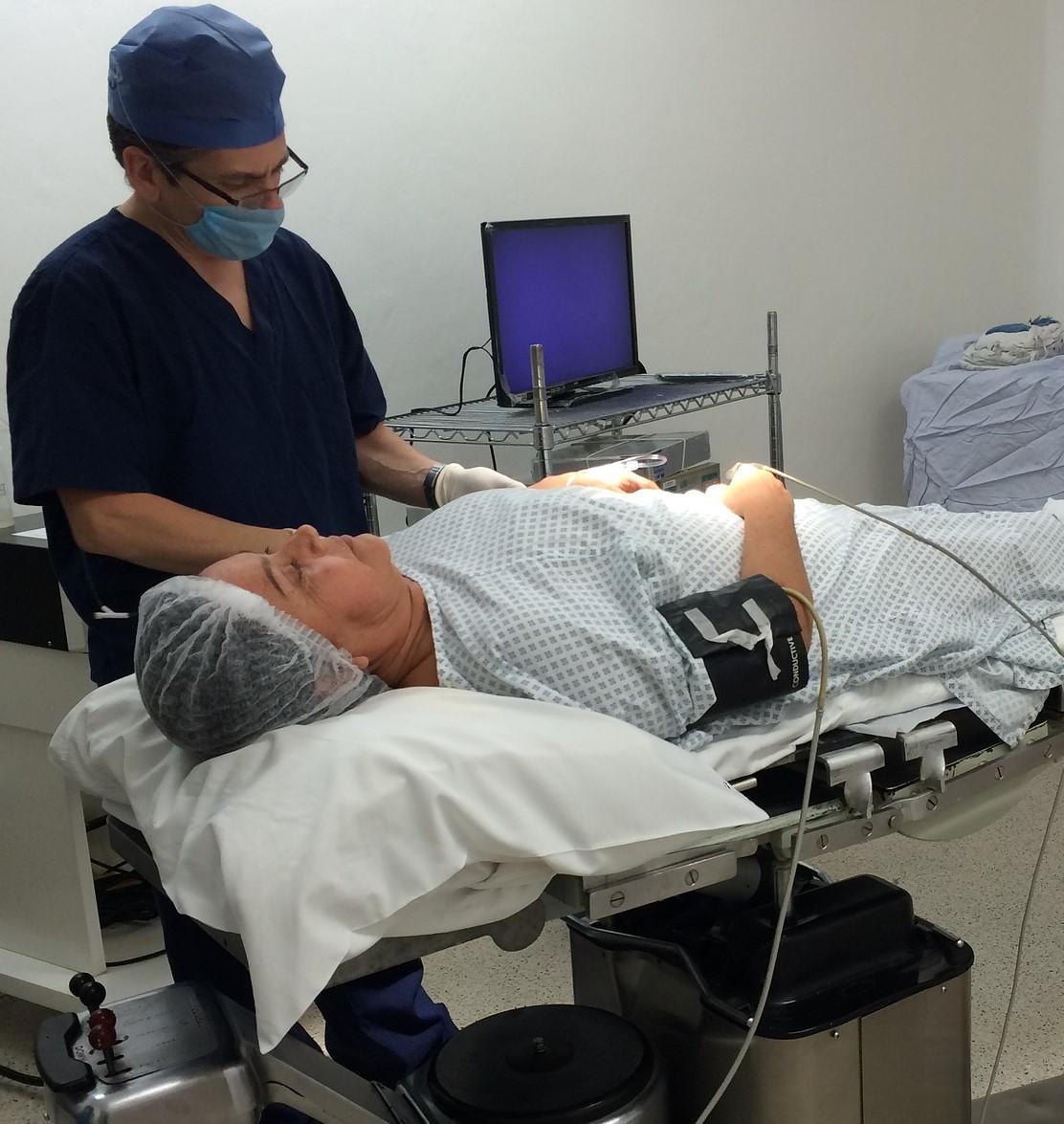Managing COVID-19 infection risk during operations

Anaesthetist preparing a patient
Anaesthetists are at higher risk of catching COVID-19 during operations and other interventions than other healthcare workers as anaesthetising a person frequently involves placing breathing tubes or masks into their airway to assist their breathing.
Experts from the University of Adelaide have studied best practice currently being used around the world during the pandemic to minimise the risk that anaesthetists and other healthcare workers are infected.
“If a patient has COVID-19 there is a high risk that during intubation they will infect medical staff and anaesthetists are the most at risk due to them managing a patient’s airway.”Dr Venkatesan Thiru
“COVID-19 is likely to remain in many communities for the foreseeable future. Although the daily new cases have reduced in many countries, some regions are witnessing a second wave of infection,” says lead author of the study Dr Venkatesan Thiru, Senior Clinical Lecturer at the University of Adelaide and Department of Anaesthesia, the Queen Elizabeth Hospital, Adelaide.
“Current evidence suggests that COVID-19 spread occurs via respiratory droplets and possibly through the air.
“Suspected or confirmed COVID-19 positive cases present unique challenges to healthcare workers as the rate of transmission to healthcare personnel remains very high. In Italy, among the infected cases, nine per cent were healthcare workers.
“Evidence from the severe acute respiratory syndrome (SARS) epidemic in 2003 shows that anyone involved in tracheal intubation had a higher risk of infection than other health workers not carrying out the procedure.
“If a patient has COVID-19 there is a high risk that during intubation they will infect medical staff and anaesthetists are the most at risk due to them managing a patient’s airway.”
Tracheal intubation, usually simply referred to as intubation, is the placement of a flexible plastic tube into the trachea (windpipe) to maintain an open airway or to serve as a conduit through which to administer drugs. Tracheal tubes are frequently used for airway management during general anaesthetics, critical care, mechanical ventilation and emergency medicine.
Hospitals have been identified as major sources of infections during the COVID-19 crisis.
“During the COVID-19 pandemic hospitals have minimised non-essential surgery to decrease transmission rates of the virus,” says study co-author Associate Professor Roelof Van Wijk, Head of the Department of Anaesthesia, the Queen Elizabeth Hospital, Adelaide.
“The risk to healthcare workers, especially anaesthetists, should be minimised otherwise the reduction in personnel will mean that healthcare systems will very quickly reach breaking point in a pandemic.”
Efforts tailored to the local environment will not only help overcome the pandemic, but also help to manage similar events in the future.
The first responders should follow certain precautions during CPR to prevent the spread of the virus,” says study co-author Dr John Currie, Visiting Medical Specialist, the Queen Elizabeth Hospital, Adelaide.
“Australian hospitals have implemented many of these measures which have proven effective in limiting the risk of transmission to health care workers. In order to better inform medical professionals of the steps available to them we reviewed all the techniques currently being used by healthcare workers to minimise the chance of infection across a variety of procedural interventions,” says Dr Thiru.
In their study, the experts identified various measures, some of which involve small changes in procedures, which can have a significant impact on transmission rates. These include:
- Supply suitable personal protective equipment (PPE): this is a significant component in minimising transmission
- Minimise the number of healthcare workers who come into contact with the patient while they are being intubated
- Only allow essential staff in operating rooms with support teams located elsewhere
- Use specific sets of airway equipment only for COVID-19 positive patients
- Use airborne infection isolation rooms, which continuously change and filter air, for procedures
- Use drugs to reduce cough reflex and vomiting
- Don’t perform procedures on infected patients, especially bronchial procedures, unless they are life-threatening
- Use video-equipped devices to assist with inserting the air tube as this increases the distance between anaesthetist and patient
- During extubation reduce exposure to aerosol particles and droplets with specific and carefully planned procedures as well as appropriate PPE such as specialised face shields
- Avoid intubating a patient while they are awake unless absolutely necessary: aerosol levels are very high during this procedure.
“SARS and COVID viruses are likely to reoccur and there may be second wave of COVID-19 so this study will equip anaesthetists with examples of best practice so that they can minimise their chances of infection,” says Dr Thiru.
This study was published in the jourmal Anesthesia and Analgesia.
This study was carried out by experts from the University of Adelaide, The Queen Elizabeth Hospital, Adelaide, Basil Hetzel Institute for Translational Health, Adelaide, the University of Toronto, Singapore General Hospital and Penn State College of Medicine, Pennsylvania.
Media Contacts:
Dr Venkatesan Thiru
Senior Clinical Lecturer
The University of Adelaide
Mobile: +61 (0)431 819 763
Email: venkatesan.thiruvenkatarajan@adelaide.edu.au
Crispin Savage
Senior Media and Communications Officer
The University of Adelaide
Mobile: +61 (0)481 912 465
Email: crispin.savage@adelaide.edu.au
